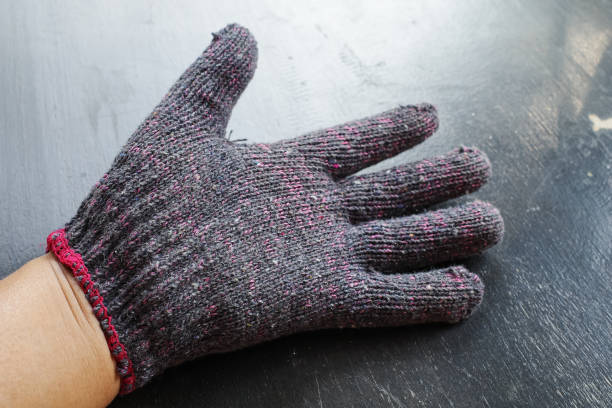1. **Preventing Burns and Heat Injuries:** Kevlar gloves provide a barrier against high temperatures, protecting hands from burns, scalding, and thermal injuries. They are essential in industries where workers handle hot objects, work near furnaces or molten metals, or encounter extreme heat conditions.
2. **Enhancing Safety and Productivity:** By safeguarding hands from heat-related injuries, Kevlar gloves contribute to a safer work environment. They reduce downtime and increase productivity by enabling workers to perform their duties without the fear of burns or discomfort.
3. **Meeting Regulatory Requirements:** In many jurisdictions, using heat-resistant gloves is a legal requirement in industries involving thermal hazards. Compliance with safety regulations helps businesses maintain a safe workplace and avoid potential liabilities.
**Construction of Kevlar Heat Resistant Gloves:**
1. **Kevlar Fiber:** Kevlar, a synthetic fiber known for its exceptional heat resistance and strength, forms the core material of these gloves. It can withstand temperatures up to 932°F (500°C) without melting or burning.
2. **Multi-layered Design:** Many Kevlar gloves feature multiple layers for enhanced protection. The outer layer is often made of a durable material like leather or Nomex, providing abrasion and cut resistance. The inner layer consists of Kevlar, offering superior heat insulation.
3. **Additional Protective Features:** Some Kevlar gloves incorporate additional features like moisture-wicking liners for breathability, silicone or nitrile coatings for chemical resistance, and reinforced palm areas for extra durability.
**Selection Factors for Kevlar Heat Resistant Gloves:**
- **Temperature Rating:** Choose gloves with a temperature rating appropriate for the intended application. Ratings typically range from moderate heat exposure to extreme heat conditions.
2. **Fit and Comfort:** Ensure a snug fit to maximize protection and dexterity. Gloves that are too loose may compromise protection, while excessively tight gloves can restrict movement and cause discomfort.
3. **Level of Protection:** Consider the additional protective features needed. For tasks involving sharp objects, gloves with cut and puncture resistance are ideal. For applications with chemical exposure risks, opt for gloves with chemical-resistant coatings.
4. **Additional Features:** Consider additional features like moisture-wicking liners for breathability, silicone or nitrile coatings for chemical resistance, and reinforced palm areas for extra durability.
5. **Certification and Compliance:** Look for gloves certified by recognized standards like ANSI or EN, ensuring they meet specific safety requirements and performance criteria.
Selecting the right Kevlar heat-resistant gloves is crucial for ensuring hand protection in high-temperature environments. By considering the factors discussed in this article, individuals and industries can choose appropriate gloves that effectively shield hands from heat-related injuries, enhance safety, and comply with regulatory standards.

